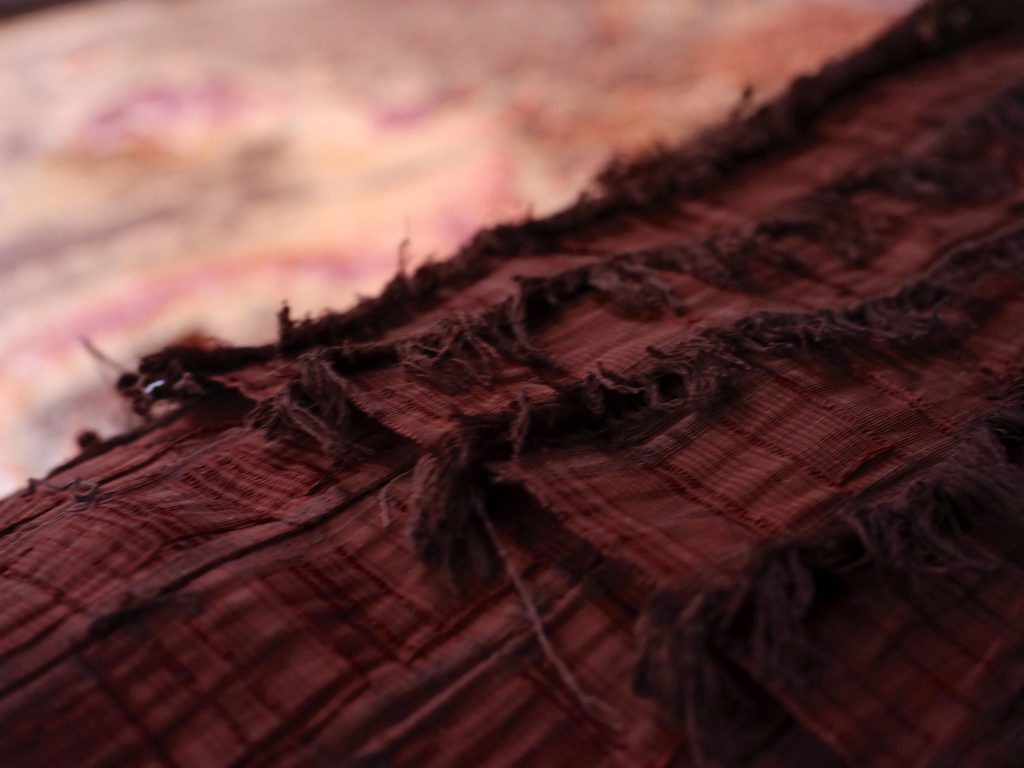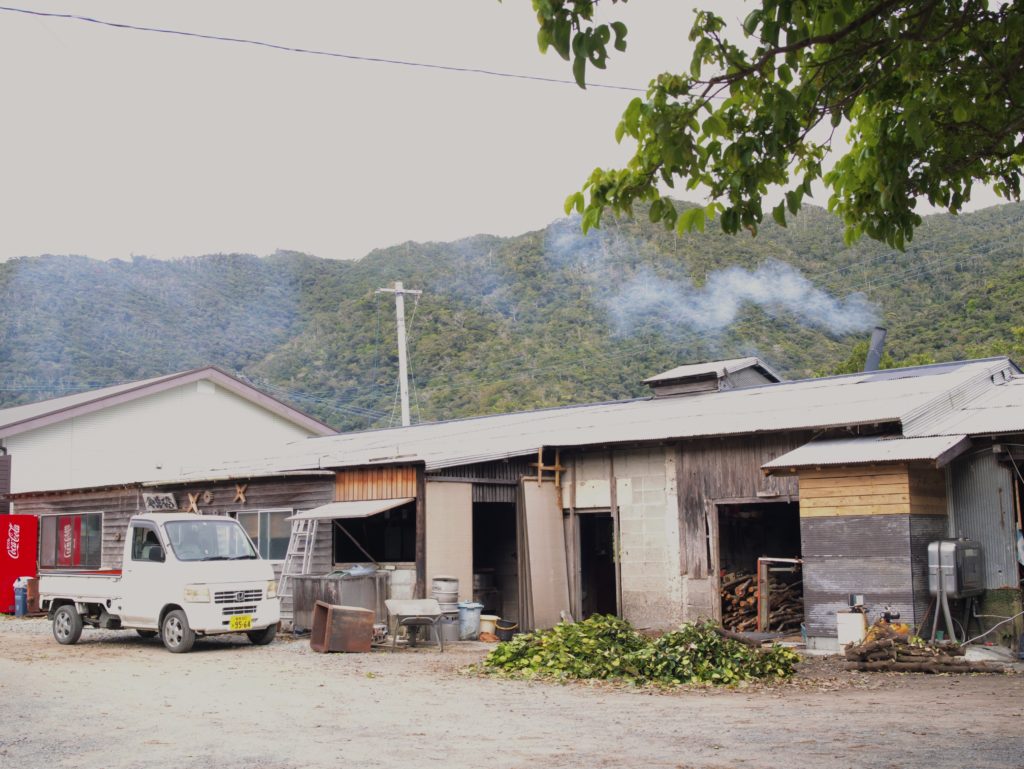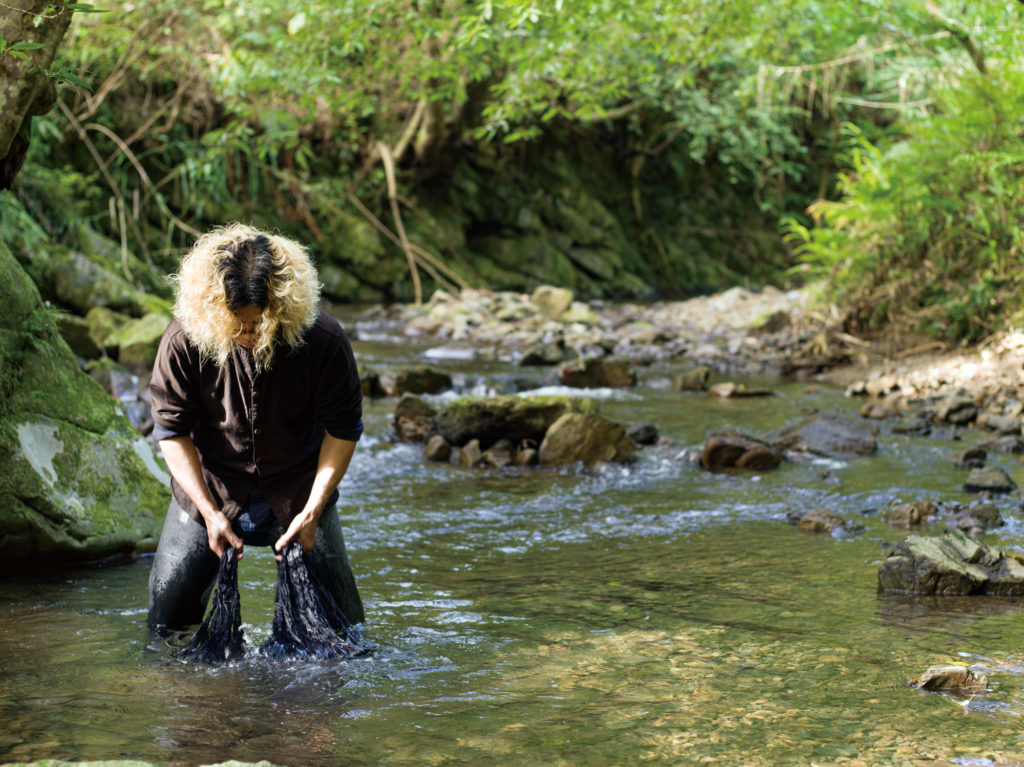Oshima Tsumugi is a traditional textile from Amami Oshima with a history believed to stretch back 1,300 years. An essential component of the textile culture is a singular dyeing technique originating on the island, called dorozome—mud dyeing.
The town of Tatsugo, in northern Amami Oshima, is home to natural dyeing studio Kanai Kougei. The second-generation proprietor, textile dyer Yukihito Kanai, cuts a brilliant figure in a world of tradition. While upholding time-honored techniques, he ventures beyond the concept of a traditional craft, and with flexible ideas and an inquisitive mind, explores new values of dorozome and other natural dyeing techniques by undertaking fresh, original projects in collaboration with creators and fashion labels. He’s a rarity in that he’s both a seasoned artisan and a spirited artist.
Dorozome involves an incredibly exhaustive series of processes. First, a wild native plant known as sharinbai(Yeddo hawthorn) is gathered, ground into wood chips, and boiled to prepare a dye bath. Silk yarn is dyed in this bath twenty to thirty times. The yarn is then immersed in mud from a paddy field. Here begins a chemistry magic show. The tannin in the sharinbai reacts with the iron in the mud to dye the yarn a dark brown color. The yarn is then rinsed, dried, and returned to the sharinbai dye bath. This entire procedure is repeated four or five times to produce layers of color that culminate in the distinct deep black of Oshima Tsumugi.

Though dorozome is such a labor-intensive craft, Kanai says unaffectedly that the island deserves more than half the credit.
“The notion of animism aside, those of us living on Amami Oshima have a keen sense that we humans are outnumbered by plants and animals. The protagonist here isn’t us—it’s the island. Humans could never make the materials used in dorozome. We just have a bit of knowledge about the composition of the mud and the workings of bacteria. Dorozome was originally a way of coexisting with nature. Our forebearers were fantastic for establishing it as a technique, that’s for sure. But the rich nature was already there, and if dorozome was a product of nature, then it was already more than halfway complete. My feeling is that humans simply added the final touches and gave it concrete shape.”

Deities are still a familiar presence, and the spirit of animism remains alive in Amami Oshima today. Creative work on this island necessarily goes hand in hand with nature.
Even the limpid stream in the forest lush with flying spider-monkey tree ferns is, in a way, part of Kanai’s studio. The process of rinsing off the mud is essential in dorozome. Because all of the materials used in the dye are found in the island’s nature, it doesn’t hurt to return them to the river.
As the sunlight came filtering through the trees, Kanai stood knee-deep in the stream, soaking the silk yarn and carefully rinsing off the mud. The soothing rhythm of the flowing water, the sound of the silk being washed, of the birds chirping, of the trees swaying in the breeze. . . Washing his silk as delicately as if it were a baby in sync with the music provided by nature’s orchestra, Kanai looked as if he might be performing a ritual prayer for the deities of Amami Oshima.

Yukihito Kanai
Textile dyer Yukihito Kanai was born in 1979 in Amami Oshima. He is the second-generation proprietor of Kanai Kougei, specializing in dorozome (mud dyeing) and other traditional natural dyeing techniques used to make Oshima Tsumugi. Yukihito ventures beyond the concept of a traditional craft, however, and explores new values of dyeing by working with materials other than fabric, such as bone and coral, and collaborating with creators and fashion labels.












